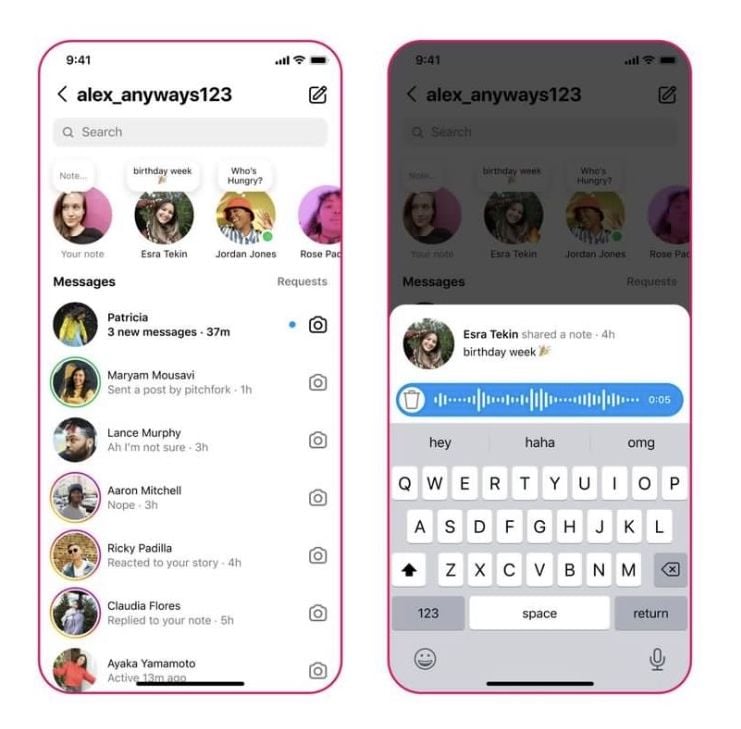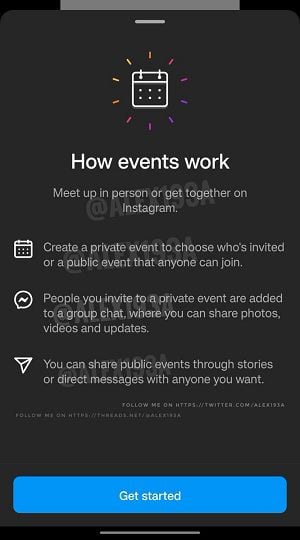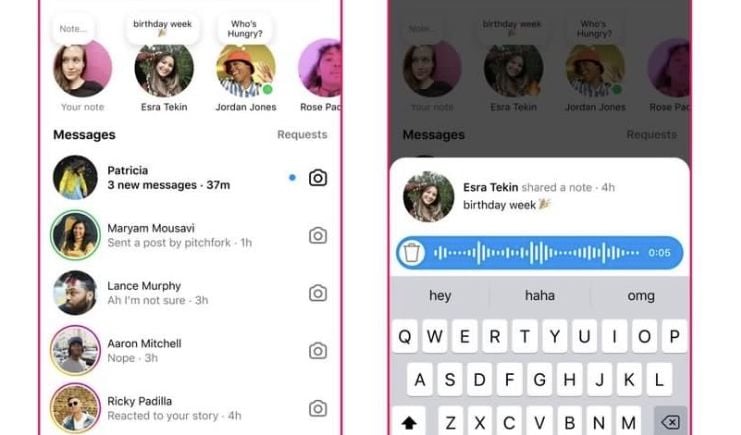Instagram continues to lean into more private sharing, with a series of new updates in testing that will provide more ways for users to interact in smaller groups.
First off, Instagram’s testing new ways to respond to inbox Notes, with users in the test pool now able to reply to Notes with audio clips, photos, videos, GIFs, and stickers.

That’ll add more ways for people to engage with Notes, and contribute to general conversations with friends.
Notes, which Instagram first launched last December, have proven especially popular with younger users, a key demographic that IG wants to keep a hold on, to stop them from migrating to TikTok instead. As such, it makes sense for Instagram to double-down on Notes, while it’s also added songs, looping video clips, and other interactive elements to Notes over the past year.
On another front, Instagram’s also testing ‘Events’, which would enable users to create in-stream chat groups around a specific function or gathering.

As you can see in this example, shared by app researcher Alessandro Paluzzi, private events would provide another way to drive enclosed engagement within the app.
Instagram’s also working on a “Nearby” feed for Stories, which would give you a way to see public Stories posted by users (and businesses) in your area, while it’s also experimenting with an option that would enable you to set your Stories feed to only updates from users who follow each other.

So rather than seeing all the latest updates from celebrity and business accounts, you’d only see the updates from the people who you’re more likely to have a real world connection with, as you both follow each other. That could be a better way to drive direct engagement and interaction in-stream.
But really, the main focus of each of these is on honing in your social space, and connecting within smaller groups.
One of the most significant shifts in social media over the past few years has been the transition of engagement into private channels, as opposed to users sharing updates to their main feeds.
Originally, social media platforms offered a means for everyone to have their voice heard, with broadcasting to a wide audience being a key appeal. But as time’s gone on, and more negative impacts of such have arisen (e.g. divisive arguments, negative perception and being “canceled”, old posts coming back to haunt you), more and more users have retreated to enclosed, private group chats instead, offering greater security among people that you know and trust.
Instagram, in particular, has witnessed this shift.
As explained by Instagram chief Adam Mosseri last year:
“Friends now post a lot more to stories, and send a lot more DMs, than they post to Feed.”
Many creators and brands/organizations are still posting to the main timeline, but more interaction is actually moving into DMs, which, as noted, is why Instagram has been adding a range of new tools to lean into this shift.
For example:
- In December last year, Instagram added Notes, a conversation-prompting option which highlights chat prompts from your connections at the top of your DM inbox
- In February, Instagram launched Channels, providing a one-to-many messaging option, aimed at celebrities and creators looking for a DM-aligned way to stay in touch with fans
- In March, IG rolled out Collections, which enables users to collaborate and interact around selected posts shared in a group feed
- In September, Instagram added a new option to share feed posts with Close Friends only
The idea is to lean into this behavioral shift, keeping Instagram users posting, while also recognizing that the main feed is no longer where a lot of people are looking to interact.
Which is where these new updates also come in, and together, they’ll facilitate more private engagement in the app. Which is also an important note for marketers, in that more of this discussion is moving out of view, which likely makes “Shares” a more important stat for tracking.
Though it also complicates things, in terms of direct response data and measuring engagement. But it’s another element to keep in mind, which may change the way you look to track KPIs and performance over time.



